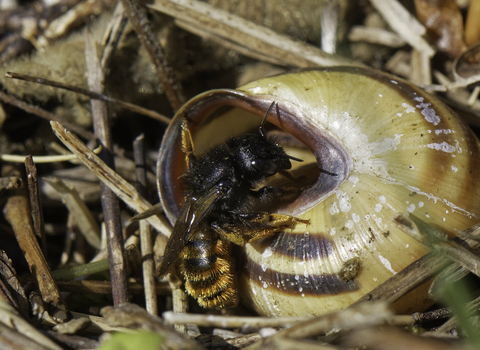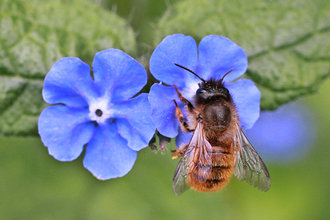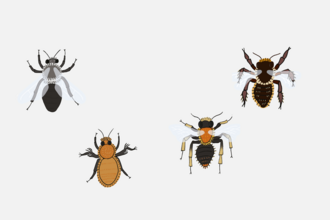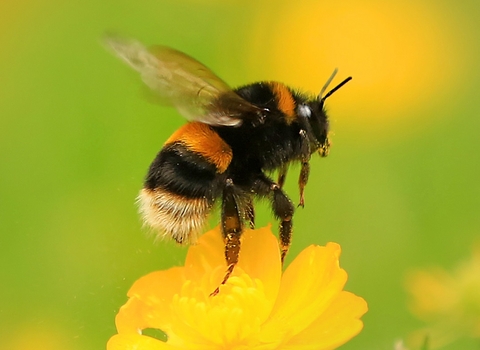
Female Osmia bicolor entering her nest in a snail shell © Nick Upton
Red-tailed mason bee
Also known as the two-coloured mason bee, this beautiful bee is famous for nesting in old snail shells.
Scientific name
Osmia bicolorWhen to see
March to JulySpecies information
Category
Statistics
Length: 12mmConservation status
Nationally Notable
Habitats
About
Male red-tailed mason bees appear early in spring, usually in early March, with the more distinctive females emerging a week or two later. They're most at home on chalk and limestone grasslands, quarries, and brownfield sites. They can be seen visiting a range of flowers, from bird's-foot-trefoils and vetches to spring-blossoming shrubs like sallows, blackthorn and hawthorn.Red-tailed mason bees have the unusual habit of nesting in empty snail shells. Females lay their eggs inside a shell then plug up the opening with pieces of chewed up leaves, soil, and shell fragments. They then collect grass stalks and other items to place in a mound on top of the shell. This is probably to protect their eggs from predators and parasites.
How to identify
Females have black hairs on their head and thorax (the part of the body behind the head), with bright orange-red hairs on their abdomen - giving them their 'red-tailed' appearance. Males are slimmer, with pale buffish-brown hairs on their head, thorax and abdomen.Distribution
Mostly found in southern and eastern England, roughly south of a line between the Wash and the Severn Estuary, though there is evidence of a recent northward expansion. Also found in south Wales.Did you know?
Female red-tailed mason bees will chew up bits of leaf and plaster them to the outside of the snail shell they use as a nest, adding to the camouflage provided by the mound of grass stems they pile on top of it.Watch
Red-tailed mason bee (https://vimeo.com/827959512)
A female red-tailed mason bee visiting her nest in an old snail shell, followed by another female piling stems on top of her snail-shell-nest to camouflage it © Tom Hibbert




